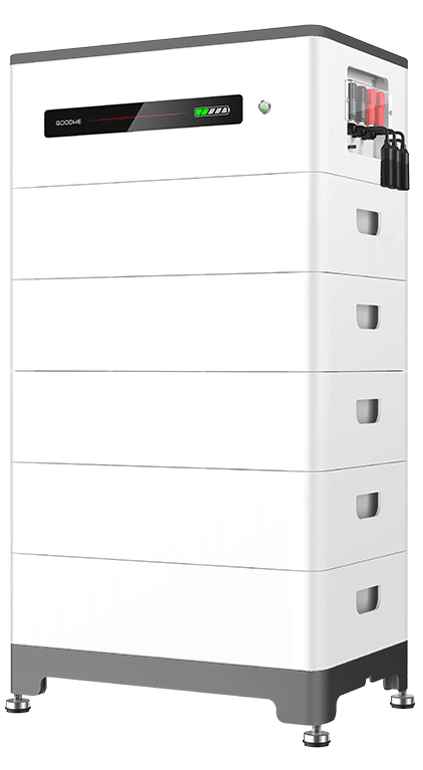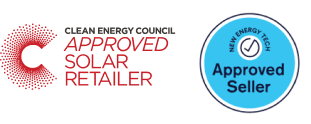As Australians quicken their shift to solar and renewable energy systems, home battery storage is fetching a crucial component. GoodWe, a major player in the solar inverter and energy storage space, has been rolling out novel battery models optimized for Australian conditions.
In this post, we discover the state-of-the-art GoodWe battery series accessible in Australia, their standout features, recommendations for usage, and the benefits homeowners can expect.
Latest GoodWe Battery Series in Australia
GoodWe offers a varied portfolio of energy storage batteries, chiefly underneath the Lynx Series and the BAT Series, catering to both residential and commercial & industrial (C&I) requirements.
These newest batteries are usually considered by advanced security features, modular and flexible designs, and consistent Lithium Iron Phosphate (LFP) technology.
As of 2025, among the battery lines GoodWe is encouraging in Australia, two key series stand out:
- Lynx F G2 Series (High Voltage / Modular)
- Lynx Home F Series (earlier / baseline HV series still in market)
(Also, GoodWe has publicized an All-In-One ESA battery system, though its obtainability and governing approval in Australia are still in fluctuation) Let’s dive into each.)
1. Lynx F G2 Series
The GoodWe Lynx F G2 Series is the company’s modern generation High Voltage (HV) modular energy storage system, intended for a broad range of applications from huge residential homes to small commercial properties in Australia.
This battery is a central component of GoodWe’s “one-stop-shop” energy solution, offering excellent scalability, security, and affluence of installation.
This is GoodWe’s newer, modular high-voltage battery series considered for homes and light commercial installations.
Key Features
- Capacity Range & Modularity
The system supports from 6.4 kWh up to 28.8 kWh per battery tower. - Multiple towers can be allied in parallel (up to 8 towers), giving system capacities up to ~230 kWh.
- High Voltage Design
Because it is high-voltage, it pairs efficiently with GoodWe’s hybrid inverters (e.g. EH, ET) without needing large current in DC wiring. - Stackable, Self-Detecting Modules & Plug & Play Wiring
Modules are calculated to auto-recognize when added, reducing complications in installation. Prewired communication cables benefit from streamlined wiring. - Safety & Chemistry
Uses lithium iron phosphate (LiFePO₄, LFP) cell chemistry, recognized for thermal stability, harmless operation, and lengthier cycle life. Battery inclusions propose a guard (IP55 rating) for both indoor and outdoor usage. - Smart Monitoring & Remote Capability
Remote diagnostics, firmware updates, and system performance monitoring via GoodWe’s platform (SEMS or associated apps) are supported. The system also cares auto-reboot in case of undervoltage measures, improving flexibility. - Compatibility
Designed to be well-suited with GoodWe hybrid inverters such as EH, ET, etc. - Warranty & Lifespan
GoodWe usually offer a 10-year warranty on these battery systems.
Example: The 16.0 kWh module (LX F16.0-H-20) is one of the variants in the G2 line.
The Lynx F G2 Series is an idyllic solution for homeowners and businesses aiming to maximize solar self-consumption, lessen electricity bills by shifting Time-of-Use (TOU) loads, and safe consistent backup power during grid outages.
2. Lynx Home F Series (Baseline)

The GoodWe Lynx Home F Series (Baseline) is the prototype of the G2 model and served as GoodWe’s foundational High Voltage (HV) modular battery system for residential and small commercial applications.
It is a DC-coupled storage solution, meaning it connects straight with a well-matched GoodWe hybrid inverter.
This is the former (or existing) high-voltage modular series that is still sold and used in several systems.
Features & Highlights
- Offers capacity modules from ~6.6 kWh up to ~16.4 kWh.
- Uses LFP battery chemistry, stackable module design, and IP55 guard for installations.
- Compatible with GoodWe EH / ET inverters, cares clever monitoring, and features auto-reboot after undervoltage.
- The F series is well-suited for distinctive residential energy consumption scenarios in Australia, with decent safety and performance.
While the Lynx F G2 Series is the newer generation, the original Lynx Home F Series recognized the modular, high-voltage platform for GoodWe, offering a consistent solution for maximizing solar self-consumption and providing backup power.
Because the G2 series is newer and enhanced, several new installations may favor it over the baseline F series, but the F series endures to persist relevant, especially where older or smaller systems are being retrofitted or expanded.
Usage Guidelines & Best Practices
To get the most out of a GoodWe battery installation, deliberate the following usage procedures:
1. Sizing & Load Assessment
- Begin with a thorough audit of your household’s energy consumption, how various kWh are used in the evening, overnight, and during peak demand times.
- Select a battery size that covers an expressive portion of your non-solar usage (e.g., 50-70%). Over-sizing costs more; under-sizing may bound benefits.
- Use the modular nature (particularly in the G2 series) to expand in the future as desires grow (e.g. EV charging, further appliances, increased family size).
2. Matching with Inverter & System Compatibility
- Confirm your inverter supports the battery’s voltage range, charge/discharge currents, communications protocols, and backup switching.
- GoodWe’s own inverters (e.g. EH, ET, BT) are well matched to their battery lines, yielding smoother integration and simplified warranty/maintenance.
- In retrofit scenarios (adding a battery to an existing solar system), prove the compatibility of voltage, wiring, shielding devices, and control logic.
3. Installation Location & Conditions
- The batteries can usually be installed indoors or outdoors, thanks to IP55 or improved protection. However, avoid areas of extreme heat or direct sun exposure, or confirm shading and ventilation.
- Uphold appropriate spacing around the module/tower to permit airflow and secure access.
- If multiple towers are used, preserve balanced installation and wiring to decrease mismatches.
4. Charge / Discharge Management
- Avoid recurrent deep cycling (i.e., running to 0 % or full 100 %) except the system is intended for that; aim for simulations/trickle usage within the “sweet spot” (e.g. 10 % to 90 %) to prolong battery life.
- Use time-of-use tariffs wisely: charge when grid tariffs are low or solar generation is high, discharge during peak cost periods.
- In blackout / backup mode, prioritize vital loads (fridge, lights, communications) and set up a distinct backup circuit if desired.
- Monitor battery performance sometimes using the monitoring platform; watch for abnormal temperature, cell drift, or communication errors.
5. Maintenance & Monitoring
- Although LFP batteries are moderately low maintenance, it is sensible to inspect connections, confirm correct ventilation, and monitor for dust, moisture, or corrosion.
- Retain firmware updated, as manufacturers occasionally release improvements or bug fixes.
- Use the remote diagnostics platform to get alerts or logs should any fault or warning happen.
6. Safety & Protections
- Ensure overcurrent protection, isolation switches, and appropriate fusing are in place as per electrical standards in your state.
- Make certain the battery room or location has suitable fire detection, suppression, or fire-safe construction, even though LFP chemistry is less harmful than several other lithium chemistries.
- In humid or condensation-prone areas, preserve dehumidification or moisture control to avoid internal corrosion.
Benefits & Advantages for Australian Users
The advantages of selecting a GoodWe battery, chiefly the Lynx series (Home U, Home F, and F G2), center on a balance of progressive security features, brilliant scalability, and unified system integration, often at a viable price point in the mid-range market.
Investing in a GoodWe battery system in Australia proposes manifold tangible and intangible benefits:
- Energy Independence & Grid Deferral
You can usage stored solar energy during periods when solar generation is zero (evenings, cloudy days), reducing dependence on the grid and experience to rising electricity tariffs. - Peak Shaving & Cost Optimization
By discharging during topmost tariff times and charging when rates or solar input is promising, you can decrease your electricity bill significantly. - Backup / Resilience
Numerous GoodWe systems sustenance reckless switchover (sometimes < 10 ms) to backup mode, keeping vital loads powered even during grid outages. - Scalability & Future Proofing
The modular architecture (especially in the G2 series) permits you to start with a slighter pack and expand later as your energy requirements grow (e.g. to support EV charging, more appliances). - High Safety & Longevity
With LFP chemistry, thermal and chemical consistency is outstanding. The battery is less prone to thermal runaway or degradation than several high-energy density chemistries.
GoodWe’s warranty (10 years with capacity retention) proposes self-assurance in long-term performance. - Smart Control & Remote Management
Integrated monitoring, diagnostics, and firmware updates mean that performance can be optimized over time, and problems can be perceived initial without requiring physical intervention. - Compatibility & Ecosystem Integration
When paired with GoodWe’s own inverters and control systems, installation is smoother, and system behavior is improved and coordinated. This integrated tactic reduces compatibility hassles. The company’s occurrence and support network in Australia also aids in local servicing, warranty handling, and installer familiarity. - Contribution to Decarbonisation
Using solar + storage benefits decrease dependence on fossil-fuel electricity, lowers household carbon emissions, and support a more sustainable grid.
Challenges & Considerations
While the advantages are countless, there are some cautions:
- Upfront Cost & Payback
The capital cost of battery systems can be high, and payback depends deeply on your usage pattern, tariffs, incentives, and system sizing. - Regulatory & Incentive Uncertainty
The approvals, rebate schemes, and regulations vary by Australian state, and new battery models (such as the ESA “all-in-one” system) may still be under regulatory review. - Temperature & Climate Stress
In awfully hot or cold climates, battery performance can be reduced, or safety margins can be tested. Satisfactory thermal management is essential. - Inverter / System Integration Complexity
Even “plug & play” systems necessitate cautious matching of electrical, communication, and protection systems. An unsuitable installation can reduce performance or void warranties. - Depreciation and Wear
Over countless cycles, capacity will fade. Confirm warranty cover and plan for ensuing replacement or augmentation as technology progresses.
Outlook: The ESA All-In-One System & Next Trends
GoodWe has newly showcased a new ESA all-in-one battery solution for home use, combining inverter + battery in a sole package (3–10 kW / 5–48 kWh) with quicker backup switching (<4 ms) and progressive protection (AI-driven arc fault interruption, etc.).
At present, its status in Australia (and in the Clean Energy Council listing) is not yet fully established. If and when that system becomes entirely approved and distributed, it may change the landscape by shortening installation and reducing the component count.
In all-purpose, upcoming trends are likely to include:
- Greater intelligence (AI / predictive charging/discharging)
- Higher energy densities and better thermal behavior
- More streamlined all-in-one systems
- Tighter integration with EV chargers, home appliances, and vehicle-to-grid (V2G) capability
- More flexible financing and incentive models from governments
Conclusion
The GoodWe Lynx F G2 Series denotes the forefront of modular, scalable, high-voltage battery solutions in Australia today. Backed by robust security features, remote management, and compatibility with GoodWe’s inverter ecosystem, it is compatible for homeowners seeking consistent solar + storage systems.
The baseline Lynx F Series endures to persist pertinent where suitable. To confirm the system achieves optimally over the years, suitable sizing, correct installation, steady monitoring, and care best practices are vital.
The benefits in terms of energy freedom, bill savings, flexibility, and long-term carbon impact make battery storage a compelling selection for many Australian households.





